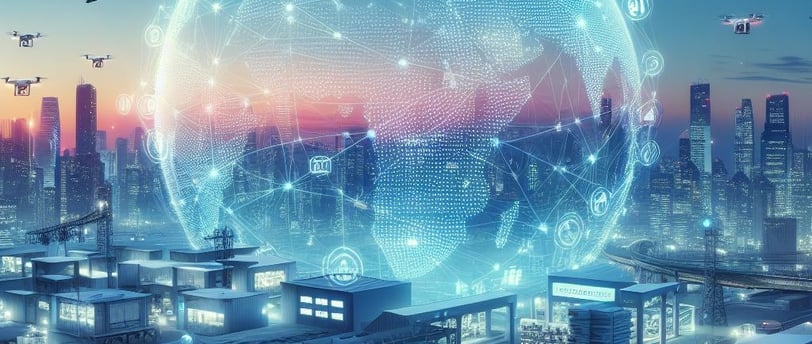StingrayLink: Supply Chain in 2035-- Charting a Course for Innovation and Resilience
Biofabrication is here.
Omar Rebaza
1/18/20242 min read


As we project into the future, the supply chain landscape is poised for unprecedented transformation by 2035. The confluence of emerging technologies, sustainability imperatives, and geopolitical shifts will redefine the way businesses approach logistics and operations. Let's look ahead at the possible key trends and expectations for the supply chain in 2035.
Fully Autonomous End-to-End Supply Chains: By 2035, the vision of fully autonomous supply chains will become a reality. From raw material sourcing to last-mile delivery, autonomous technologies, including AI-driven decision-making, robotics, and self-driving vehicles, will seamlessly orchestrate end-to-end operations. This level of automation will enhance efficiency, reduce costs, and minimize the risk of human error.
AI-Driven Predictive and Prescriptive Analytics: The evolution of artificial intelligence will lead to even more sophisticated predictive and prescriptive analytics. Advanced machine learning algorithms will not only predict future supply chain events but also prescribe optimal courses of action. This level of AI-driven decision support will empower supply chain managers to navigate complex scenarios with unparalleled precision.
Carbon-Neutral and Circular Supply Chains: Environmental sustainability will be a non-negotiable aspect of supply chain management in 2035. Supply chains will strive for carbon neutrality, with a focus on renewable energy sources, eco-friendly transportation, and sustainable sourcing practices. The circular economy will be fully integrated, minimizing waste and encouraging the recycling and repurposing of materials throughout the supply chain.
Blockchain for Enhanced Transparency and Traceability: Blockchain technology will be ubiquitous in supply chains, providing an immutable and transparent ledger for transactions and data. This will enhance visibility, traceability, and accountability across the supply chain network. Consumers and stakeholders will have real-time access to verifiable information about the origin, journey, and impact of products.
Biofabrication and 3D Bioprinting in Manufacturing: The manufacturing landscape will witness the integration of biofabrication and 3D bioprinting. This revolutionary technology will enable the production of complex biological structures, leading to advancements in personalized healthcare and the creation of bio-sourced materials. Supply chains will adapt to incorporate these innovations, reshaping the way products are manufactured and distributed.
Hyperconnected Ecosystems with Quantum Computing: Supply chain ecosystems will be hyperconnected, leveraging the power of quantum computing for unparalleled processing capabilities. Quantum algorithms will optimize complex supply chain processes, including route planning, inventory management, and demand forecasting. The quantum advantage will provide a competitive edge in navigating the intricacies of a rapidly evolving global market.
Resilient Supply Chains with Digital Twins and Simulation: Digital twins and simulation technologies will play a crucial role in building resilient supply chains. Businesses will create digital replicas of physical supply chain components, allowing for real-time monitoring and simulation of various scenarios. This proactive approach will enable organizations to identify vulnerabilities and implement preventive measures, ensuring resilience in the face of disruptions.
Personalized and Instantaneous Customer Experiences: Supply chains in 2035 will be driven by an intense focus on personalized and instantaneous customer experiences. Advanced data analytics and AI will enable businesses to understand individual preferences in real-time, leading to highly customized products and services. Last-mile delivery will be further optimized, providing consumers with instant gratification.
The supply chain in 2035 is poised to be a technological marvel, characterized by autonomy, sustainability, and resilience. As businesses chart a course into this future, embracing emerging technologies, prioritizing sustainability, and building adaptive and interconnected supply chain ecosystems will be paramount. The journey towards 2035 requires a commitment to innovation, a proactive stance toward change, and a strategic vision that anticipates and leverages the transformative trends shaping the future of supply chain management.
